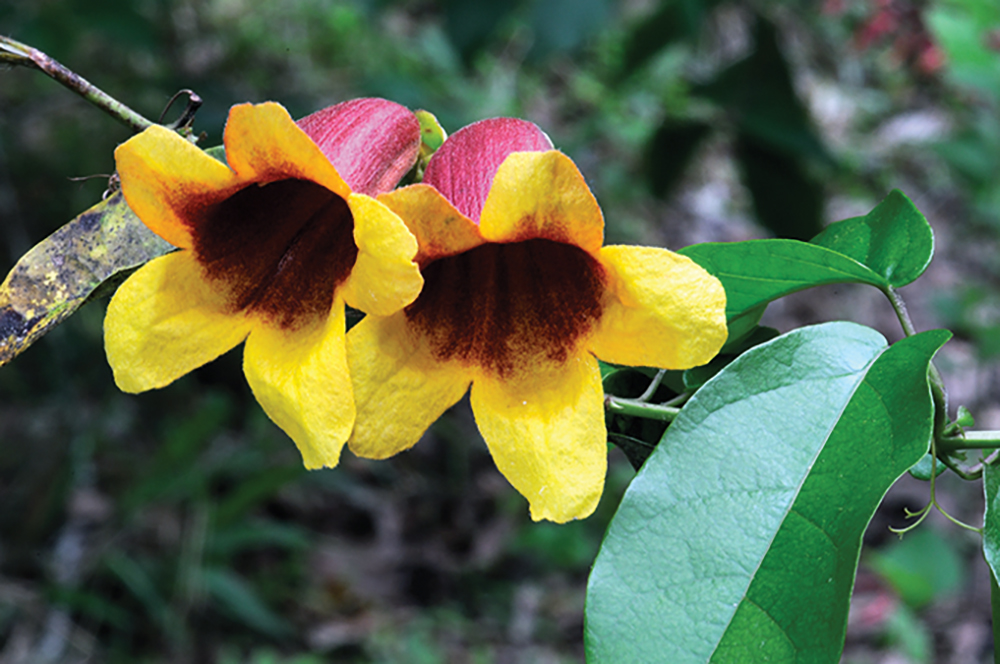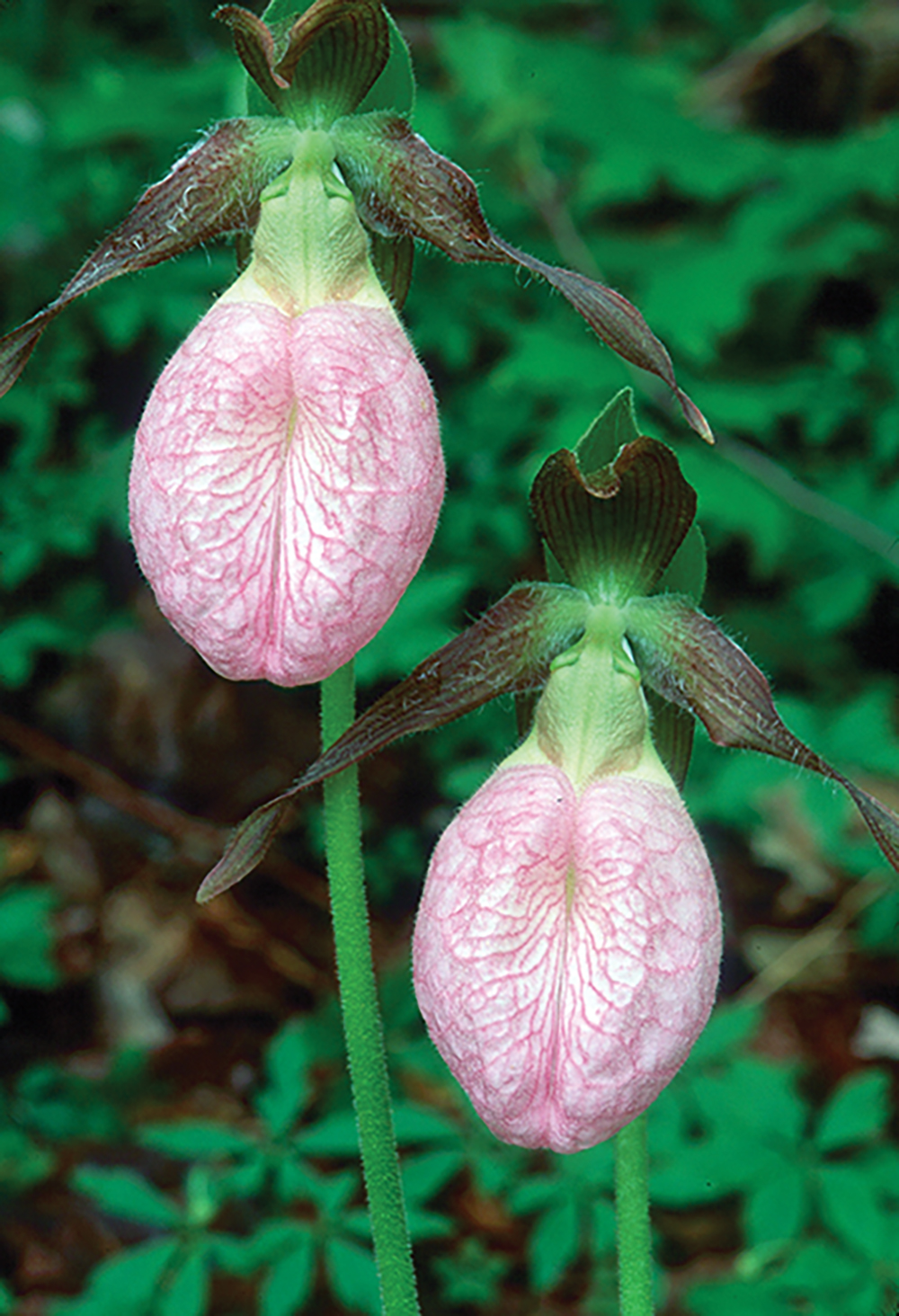By Alfred Schotz
Wildflower viewing in central Alabama
The landscape of central Alabama is one of striking contrasts and immense beauty, a mingling of high mountains, rocky shoals, and open grasslands amid a setting of verdant forests. Through the powers of nature and the passages of time, the region has been sculpted into a profound array of natural environments that, in turn, have nurtured a remarkable diversity of wildflowers and native plant life, some found only here and nowhere else on the planet.
From the budding novice to the seasoned aficionado, those who admire the state’s wildflower riches eagerly anticipate the spring season to become reacquainted with favorites from the past or begin searches anew for “life species” that have long aroused intrigue and fascination, but evaded detection.
Perhaps of all the flowering plants bestowed upon central Alabama, orchids are surely among the most cherished and sought after. Their exquisite display of colors and forms evoke an air of fantasy and are a symbol of all that is exotic.
For many, the general perception of orchids is one of mystical and distant lands of the equator, and rightly so, for orchids are most commonly encountered in tropical regions. However, several species are distributed across the cooler regions of North America, and are as rich and varied as the landscape in which they grow.
Alabama, with its fertile soil, ample rainfall, and temperate climate, is prime orchid country, producing an opulence of vivid colors and bizarre shapes adorning all facets of the state’s landscape. In fact, a number of orchids – 58 species in all – embellish the Heart of Dixie, with many occurring across the central portion of the state.
Springtime brings about some of our most distinctive and attractive species, with the lady’s-slipper orchids being easiest to recognize. The fruiting capsule of this and many other species of Alabama’s native orchids produce thousands of minute dust-like seeds that can travel vast distances, carried by the slightest breath of wind.
With such an abundance of seeds, one would naturally assume orchids to be as common as kudzu. But by its very design, the seed of an orchid does not have the necessary apparatus to germinate on its own, instead relying on a specialized fungus in the soil to stimulate growth and provide nutrients.
Given such precise requirements, however, only a few of them ever find suitable conditions for germination and develop into new plants. The remainder – often thousands – will scatter into oblivion.
The splendor of wild orchids and spectacular pageants of other wildflowers will be on display for those taking the time to explore the many trails in central Alabama’s parks and preserves, including those described below.
Upon packing supplies (plenty of food, water, and of course, a camera) in preparing for a half or full day outing, the need to travel afar will not be necessary, for many of the region’s finest displays are within easy reach of central Alabama.n
Central Alabama wildflower trails
 Perry Lakes Park Trail Complex
Perry Lakes Park Trail Complex
How to get there: Entrance to the park is on the east side of State Route 175 alongside the Marion State Fish Hatchery roughly 2.25 miles north of State Route 183, approximately 7 miles northeast of Marion.
Trail condition: Trails consist of boardwalks and dirt-based pathways, both being well-maintained and easy to follow. Trails are level and can become muddy following heavy rainfall.
Best time to visit: Mid-March – mid-April. Considered one of the finest viewing areas for early spring wildflowers in central Alabama. Many trails exist, with the Basswood, Perry Lakes, and Round Lake trails offering some of the nicest displays. A trail map is available online.
 Mt. Cheaha State Park
Mt. Cheaha State Park
How to get there: Mt. Cheaha is the highest point in Alabama, roughly 15 miles south of Anniston, off State Route 281. Several options exist for wildflower viewing with the Mountain Laurel and Pulpit Rock Trails, offering the finest displays.
Trail condition: Trails are well maintained and easy to follow. Both trails are rated easy to moderate.
Best time to visit: Late April – late May. Mountain laurel and the orange-flowered Cumberland azalea are generally at their prime during the second and third weeks in May. Late April and early May are good for pink-flowered azaleas and flowering dogwoods.
 Old Cahawba Prairie Trail Complex
Old Cahawba Prairie Trail Complex
How to get there: From Selma take State Route 22 west roughly 8.5 miles to Dallas County Road 9, turn left on County Road 9 and continue approximately 3.4 miles to County Road 1, and then turn right on County Road 1, traveling about 1 mile to a parking area and kiosk on the right side of the road.
Trail condition: Trails are well maintained and easy to follow. Trails are generally level and can become slippery following rainfall; appropriate footgear is suggested.
Best time to visit: Late March – late May. Three trails exist, each traversing a mix of prairie and woodland. Colonies of early spring wildflowers can be observed in March and April along the forested sections of the trails, whereas the prairies come into their prime in May and into June.
 Smith Mountain Trail
Smith Mountain Trail
How to get there: Smith Mountain is roughly 5 miles west of Dadeville, located along the northeastern portion of Lake Martin. There’s a parking area at the end of Smith Mountain Road, and can be only reached by driving south on Smith Mountain Drive roughly one half mile from Young’s Ferry Road.
Trail condition: Trail is well maintained and easy to follow. Trail difficulty is rated as easy to moderate, with the uppermost section nearest the summit becoming more strenuous.
Best time to visit: Late March – mid-May. Mountain laurel in all its glory is the star attraction during the last two weeks of April and early May. Beginning in late March and extending to mid-April the trails are also accented with colorful blazes of azaleas, rhododendron, fringetree, and sparkleberry, particularly at lower elevations.
Alfred Schotz is a botanist with the Auburn University Museum of Natural History.





